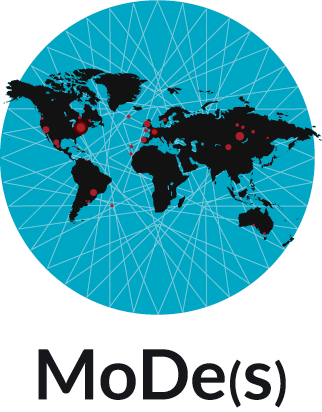Decentralized Modernities: Art, Politics and Counterculture in the Transatlantic Axis during the Cold War
AGI | Lines of Research
Reference: I+D HAR2014-53834-P
Project Information
Head of Research: Paula Barreiro López
Research team: Juan Albarrán Diego, Julián Díaz Sánchez, Olga Fernández López, Fabiola Martínez and María Ruido.
Working team: Miriam Basilio, Óscar Cambra-Moo, Jonathan Harris, María Iñigo, Fabiana Serviddio and Jaime Vindel.
PhD students: Juliane Debeusscher, Inés Plasencia, Pablo Santa Olalla.
Reference: I+D HAR2014-53834-P
Call: 2014 Calls for I+D “EXCELENCIA” and I+D+I “RETOS INVESTIGACIÓN” Projects (Dirección General de Investigación Científica y Técnica, Subdirección General de Proyectos de Investigación).
Funding organization: Ministry of Economy and Competitiveness (MINECO)
Period of realization: 3 years (from 01-01-2015 to 31-12-2017)
Associated Institutions: Centro de Estudios Museo Reina Sofía, Archives de la Critique d’ Art (Rennes), Winchester Center for Global Futures in Art Design & Media, Galería José de la Mano.
 This project centres around two main axes of study. Firstly, the analysis of the discursive narratives of modernity as shaped by artistic practices and aesthetic and critical discourses. Such analysis is also taking into account the role of institutions and exhibitions in the formation of modernist practices in the different contexts across the transatlantic world during the Cold War. Secondly, the study of the influence and the role of these transatlantic configurations in the transition from modernity to post-modernity and their ongoing presence in today’s global world.
This project centres around two main axes of study. Firstly, the analysis of the discursive narratives of modernity as shaped by artistic practices and aesthetic and critical discourses. Such analysis is also taking into account the role of institutions and exhibitions in the formation of modernist practices in the different contexts across the transatlantic world during the Cold War. Secondly, the study of the influence and the role of these transatlantic configurations in the transition from modernity to post-modernity and their ongoing presence in today’s global world.
Methodologically, the project will centre on transnational studies seeking to expose the networks of collaboration and contact zones developed by artists, critics, curators as well as art and political institutions; it seeks to show in which way these contributed to the development of a transatlantic culture. This approach will permit the configuration of a new cartography of artistic practices and of extra-institutional, institutional and political relations along the transatlantic axis. Doing so will allow us to question the historiography of art during the Cold War, and contribute towards the reconstruction of these narratives brining into the equation countries such as Spain, Mexico, Brazil, Argentina and Cuba. In this way the normative, western and colonialist modernity will be displaced to reveal a plurality of realities which gave way to different projects of artistic modernity that challenged and resisted dogmatic Modernism and its principles.
The concrete objectives of this project will be: to analyze the different models, meanings and notions of modern art prevalent in the transatlantic axis; to study vanguard and experimental artistic practices analyzing their aesthetic, political and social basis and their role as models for resistance against the normative, monolithic and polarized discourse imposed by the two blocs during the Cold War; to study the theoretical, aesthetic and critical discourses specific to each context; to identify contact zones and platforms of exchange and to study critically the politics of curatorial “narratives” developed in both hegemonic and subaltern centers. This data and analysis will be visualized through a geospatial and quantitative tool called Geographic Information Systems (GIS) accessible through the online platform that will be designed for the project.
Key Concepts:
Art, Politics, Counterculture, Decoloniality, Plural Modernities
